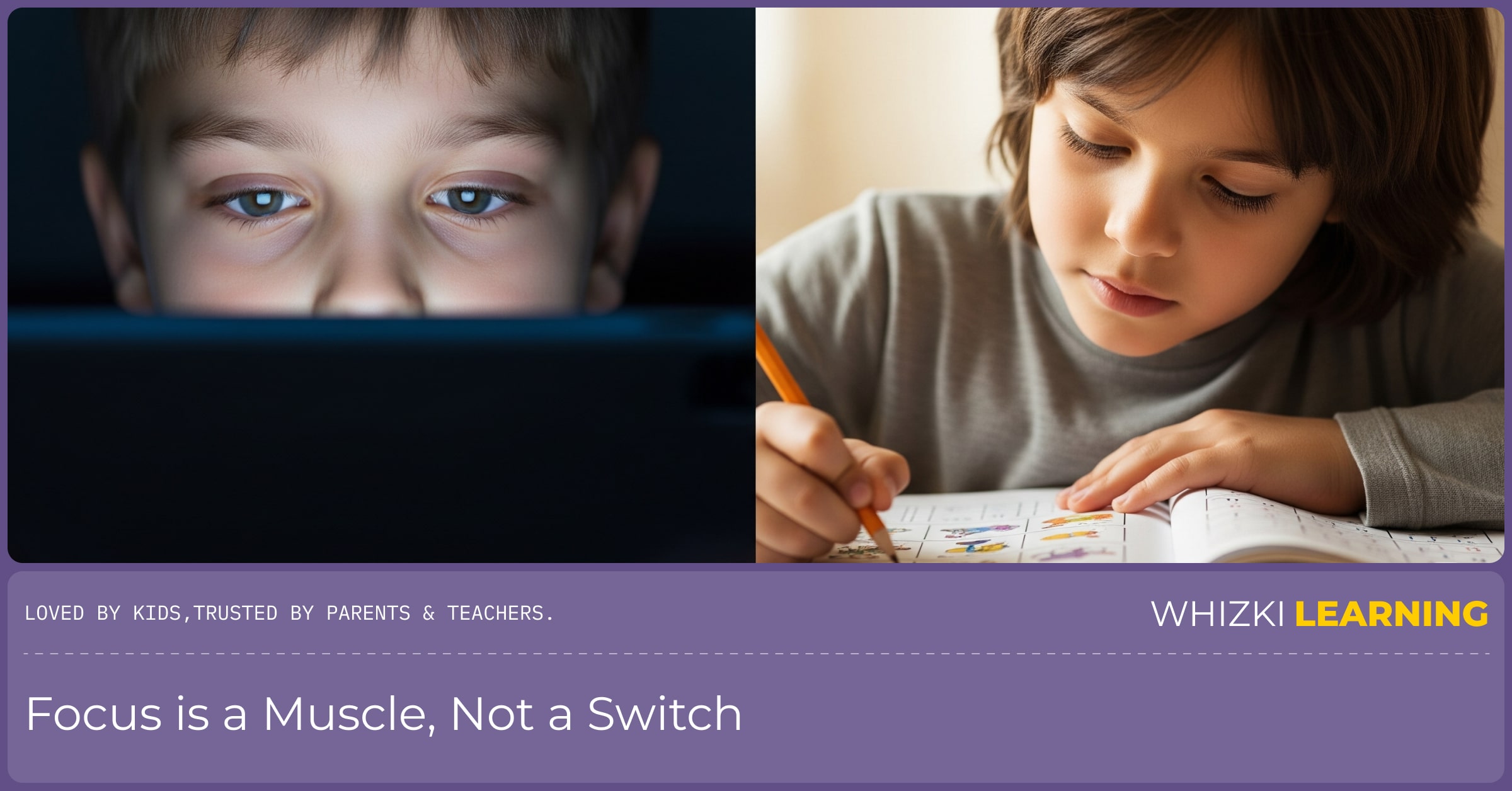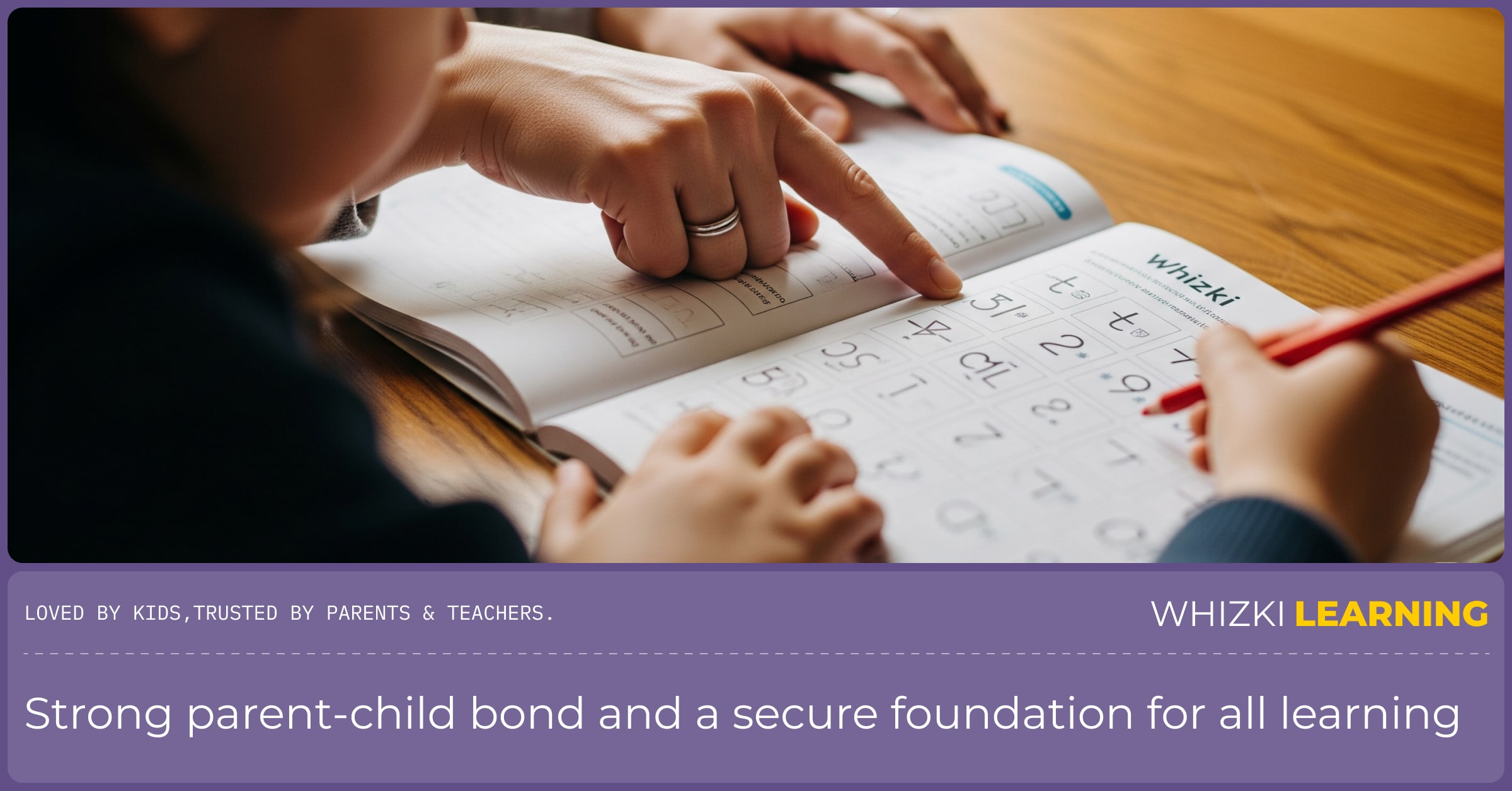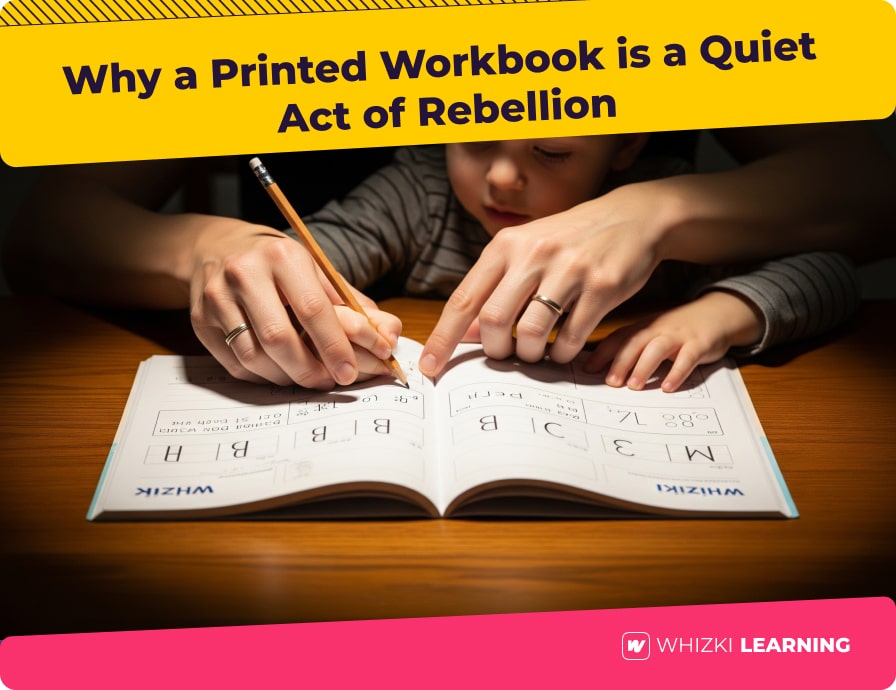Let's be honest. In a world of glowing rectangles that promise endless entertainment and education with a single swipe, choosing to sit down with your child and a simple, paper workbook can feel... quaint. Old-fashioned. Almost like an act of rebellion.
We believe it is. It's a quiet, powerful rebellion against the culture of passive consumption. It's a rebellion in favor of deep focus in an age of constant distraction. It's a rebellion for the sake of connection in a time of digital isolation. A printed workbook is not a step backward; it's a deliberate choice to give your child a different, and we believe, more powerful set of tools for thriving in the future.
This is more than a blog post. This is our manifesto. These are the core truths that drive everything we do at Whizki Learning. This is for the parents who are ready to join the quiet rebellion.
Principle #1: We Believe the Brain Thrives on Friction
A finger gliding across a glass screen is a frictionless experience. It's fast, easy, and requires almost no effort. But learning isn't frictionless. Real, deep learning-the kind that builds new neural pathways-happens when the brain and body work together to overcome a slight resistance. The gentle friction of a graphite pencil on high-quality paper, the whispery sound it makes, the tiny vibrations felt in the fingertips-this is a rich, multi-sensory data stream that a screen cannot replicate.
When a child engages in tracing and writing practice, they are not just learning shapes; their brain is processing tactile feedback, spatial information, and motor planning all at once. This physical 'work' is essential for cementing concepts in memory. As we explored in our Ultimate Guide to Handwriting Development, this hands-on effort is non-negotiable for building the foundations of literacy.
The hand is the instrument of the mind. What the hand does, the mind remembers.- Maria Montessori
Principle #2: We Believe Focus is a Muscle, Not a Switch
Digital environments are designed to fracture attention. The endless scroll, the pop-up notifications, the quick-cut videos-they train the brain to expect constant novelty. This makes the sustained, deep focus required for reading a book or solving a math problem feel like a monumental effort.
A workbook page is the antidote. It's a finite, contained universe. It has a beginning, a middle, and an end. There are no notifications. There are no hyperlinks to click. It presents a single, clear challenge. By engaging with that one page, a child isn't just learning a concept; they are doing 'reps' for their focus muscle. They are strengthening their ability to tune out the noise and engage in deep thought. It is the physical embodiment of the strategies we discuss in our guide to reclaiming focus.

Principle #3: We Believe Creativity is Born from Limits
It's a paradox, but a blank screen with a million colors and tools can be creatively paralyzing. Unlimited options can lead to decision fatigue. True creativity often thrives within a set of clear, elegant constraints.
An engaging activity book for kids provides the perfect creative springboard. The page says, 'Connect these dots to reveal the animal,' or 'Draw a face on this shape.' The limit-the prompt-doesn't stifle creativity; it ignites it. It gives the child a starting point from which their own unique imagination can leap. What kind of face will they draw? What color will the animal be? The structure provides the safety for their creativity to run wild. It's the ultimate answer to the dreaded 'I'm bored,' providing a launchpad for their own ingenuity.
Principle #4: We Believe Connection Happens Face-to-Face
Picture two scenes. Scene A: A child is sitting alone on the couch, absorbed in a tablet. A parent is in the kitchen, also looking at a screen. They are together, but separate. Scene B: That same parent and child are sitting side-by-side at the table, a single workbook open between them. The parent points to a puzzle. The child laughs and tries a solution. They are sharing a single point of focus, a shared goal.
This is the magic of hands-on learning. A printed workbook is an object that invites collaboration. It's a natural starting point for conversation and connection. As we explored in our guide to Connection Habits, these small, shared moments are the bedrock of a strong parent-child bond and a secure foundation for all learning.

Principle #5: We Believe a Finished Page is a Trophy
In the digital world, accomplishments are ephemeral. A 'level complete' screen vanishes. A game is reset. But in the physical world, effort leaves a mark. A completed page in a workbook is a tangible trophy. A fully finished kindergarten skill builder is a monument to weeks of effort and progress.
A child can hold it, flip through the pages, and see the physical evidence of their own growing brain. They can show it to a grandparent with pride. This tangible sense of accomplishment is profoundly validating. It teaches a child with a budding growth mindset a powerful lesson: 'My effort creates real, lasting results.'
Join the Quiet Rebellion
Choosing a printed workbook is not about being anti-technology. It's about being pro-childhood. It's about intentionally carving out space for the deep, focused, tactile, and connected experiences that our children's developing brains crave. It's a choice to value friction over ease, depth over speed, and connection over content.
It is a quiet act of rebellion. And we invite you to join us.






